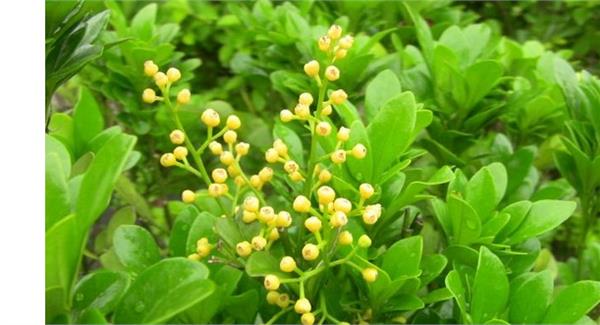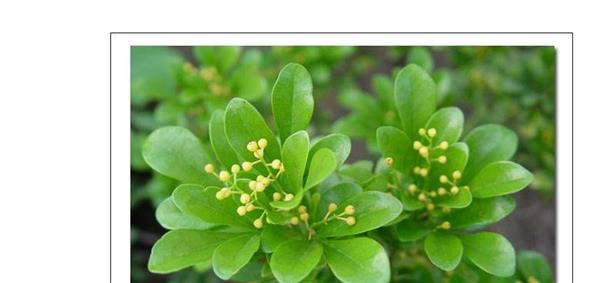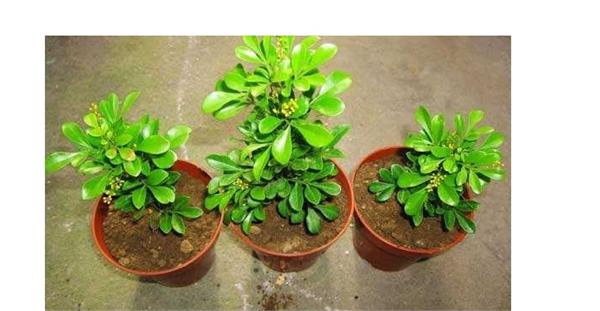The culture method of Milan flower teaches you to cultivate vitality Milan.
Milan is a highly ornamental flower variety, which has been widely concerned by people. Next, let's take a look at the breeding methods of Milan. Through the study of the knowledge of Milan, we can better apply it to our daily life.

Culture methods of Milan flower
Soil requirements:
Milan flowers prefer moist, fertile, loose loam or sandy loam, which is slightly acidic. The basin soil can be mixed with 25% compost, 50% rotten leaf soil and 25% river sand, and an appropriate amount of rotten cake fertilizer is put at the bottom of the basin as base fertilizer.
Lighting conditions:
Placing the Milan flower on a well-lit and well-ventilated garden or balcony and keeping the light for more than 8 to 12 hours a day will make the leaves of the plant green, the branches grow stout and bloom more often.
Temperature conditions:
The Milan flower likes to be warm, and the suitable temperature ranges from 20 ℃ to 35 ℃. It can blossom as many as 5 times from June to October. At the same time, under sufficient sunlight, the flowers will be very fragrant.
Watering method:
Milan flowers like to be moist, watering should be determined according to the dry and wet climate, not only to keep the basin soil moist but not to have too much water for a long time. In the period of dry weather and vigorous growth, it is best to spray water on the leaves once or twice a day.
Rational fertilization:
Proper principles should be followed in fertilizing Milan flowers. After each blossom, fertilizers should be applied in time for 3 times of fully mature dilute liquid fertilizer, so that Milan flowers can bloom continuously and have rich aroma.

Culture methods of Milan flower
(1) to maintain the good performance of the basin soil.
Milan has a well-developed root system, with many and thin fibrous roots. Therefore, it is necessary to timely replace the new soil rich in nutrients and eradicate the excess rotten fibrous roots. The basin should be changed at least once every two years, and those with good growth should be changed once a year. The new soil should be mixed with plant ash or burned-out cinder, and an appropriate amount of base fertilizer should be added to make the basin soil both fat and free of water, that is, breathable and nutritious. The extra fibrous root must be eradicated to make it send more new roots and enhance the absorption function of the root.
(2) apply fertilizer frequently by tapping water
When Milan starts to sprout in spring, it starts to buckle water. This is the most important part of "controlling branches and promoting flowers", so it is the peak period of Milan's germination, if it is not controlled in watering, it is bound to cause branches and leaves to grow. Wait for its tender head to shrunk down slightly before watering.
Keeping the basin soil in a micro-dry state can control vegetative growth and force it to transform into reproductive growth. In this way, the growth of branches and leaves can be slowed down gradually, and the leaves are thick, green and bright, the distance between leaves is short, the flower buds differentiate continuously, and the flowers and branches go hand in hand, and when the flowers bloom, the bouquet is even higher than the branches and buds.
Organic fertilizer was applied once or twice a week, and when the buds were scattered, the available phosphate fertilizer (potassium dihydrogen phosphate) was applied once. After flowering, a slightly thicker organic fertilizer was irrigated according to the plant size to supplement the consumed nutrients and lay a good foundation for the next batch of flowers. But also continue to buckle the right amount of water, to the tender head is not shrunken to the limit.
(3) adequate light should be provided.
Milan likes light, too much shade will cause branches to grow too long, blossom little or no blossom or no fragrance, so be sure to let Milan fully receive the light. This can not only enhance the light and function of its leaves to produce more nutrients, but also produce short and sturdy branches, short leaf spacing, small and thick, green and bright leaves, promote the continuous differentiation of flower buds, improve the quality and quantity of flowers, and produce flowers with rich fragrance, even in summer.
(4) plucking the heart and thinning branches in time
Milan has a strong germination rate and many tillering buds and adventitious buds, so it is necessary to timely cut off the branches and leaves from the inner branches and the branches that are too dense, weak and long that affect the plant shape, so as to reduce the unnecessary consumption of nutrients. When the tender leaves grow to the fifth layer, they should pick their hearts and force them to produce more lateral branches. Controlling the length of each branch can not only keep the plant shape perfect, but also make it blossom neatly and increase the number of flowering in each batch.

The culture method of Milan flower:
Milan is a tropical plant, not tolerant to low temperature, winter should not be less than 5 ℃, the best temperature is 20-25 ℃, usually more fragrant flowers above 30 ℃. Milan flowers like sunshine and need fertilizer. Adding animal bones or rice panning water to the soil is beneficial to Milan's flowering number and fragrance. Milan blossoms for more time and can be fattened once after each flower fade. The growing period needs more water, which can be watered 1-2 times in summer and sprayed more, so as to keep the basin soil moist in winter.
Milan likes warm, sunny places, which can be placed on the indoor windowsill, living room and study in winter, and can be planted on the balcony or courtyard in other seasons.
The above is the relevant introduction of this article, I believe you have a simple understanding of this after reading it, if necessary, you can continue to pay attention to the No. 1 home network for more information.
- Prev

Matters needing attention in indoor culture of flowers and plants common matters needing attention in flower culture
Matters needing attention in indoor culture of flowers and plants common matters needing attention in flower culture
- Next

Efficacy and function of Elaeagnus angustifolia Cotyledon Clinical Application of Elaeagnus cotyledon
Efficacy and function of Elaeagnus angustifolia Cotyledon Clinical Application of Elaeagnus cotyledon
Related
- Wuhan Hospital Iron Tree Blooming Result Was Instantly Frightened by the Gardener Master
- Which variety of camellia is the most fragrant and best? Which one do you like best?
- What is the small blue coat, the breeding methods and matters needing attention of the succulent plant
- Dormancy time and maintenance management of succulent plants during dormancy
- Minas succulent how to raise, Minas succulent plant pictures
- What are the varieties of winter succulent plants
- How to raise succulent plants in twelve rolls? let's take a look at some experience of breeding twelve rolls.
- Attention should be paid to water control for succulent plants during dormant period (winter and summer)
- Watering experience of twelve rolls of succulent plants
- Techniques for fertilizing succulent plants. An article will let you know how to fertilize succulent plants.

